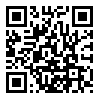Volume 4, Issue 1 (Autumn 2011)
Iranian Journal of Blood and Cancer 2011, 4(1): 1-5 |
Back to browse issues page
Abstract: (10390 Views)
Background: Thalassemia represents a serious health problem in Iran because of its heterogeneous frequency and the existing endogamy system. It is an inherited blood disease characterized by the under production of normal hemoglobin, the oxygen-carrying protein in red blood cells.
Materials and Methods: In this study, serum antioxidants including selenium (Se), zinc (Zn) and copper (Cu) were measured using atomic absorption spectrometry (AAS) in children with beta-thalassemia major (n=40) and compared with the control group (n=40).
Results: There were significant differences in the values of Se, Zn and Cu between the two groups. Se and Zn levels were 41.78±22.87 μg/l and 61.70±13.25 μg/dl in thalassemia, but 108.63±25.79 μg/l and 114.72±23.70 μg/dl in healthy children. Meanwhile, Cu levels were 156.60±22.62 and 102.88±31.15 μg/dl among patients and controls, respectively.
Conclusion: This study shows that Se, Zn and Cu may play a role in the pathogenesis of beta-thalassemia major.
Key words: Beta-thalassemia, antioxidants, children
: Case report |
Subject:
Pediatric Hematology & Oncology
Received: 2013/02/13 | Accepted: 2015/01/3 | Published: 2015/01/3
Received: 2013/02/13 | Accepted: 2015/01/3 | Published: 2015/01/3
| Rights and permissions | |
 |
This work is licensed under a Creative Commons Attribution-NonCommercial 4.0 International License. |


